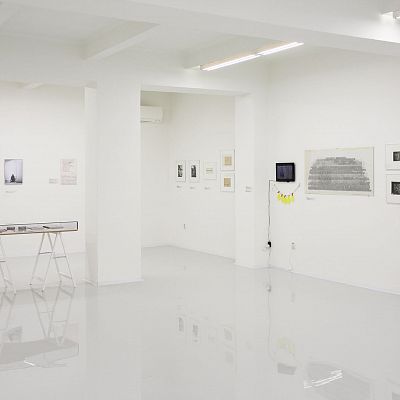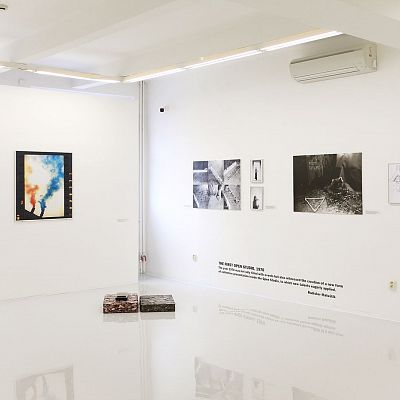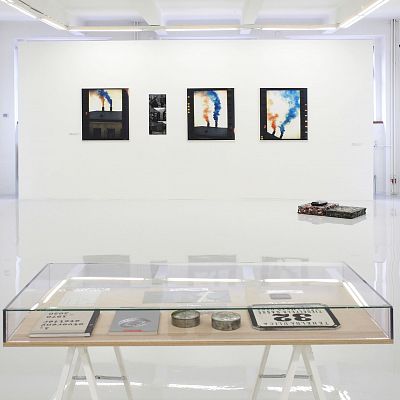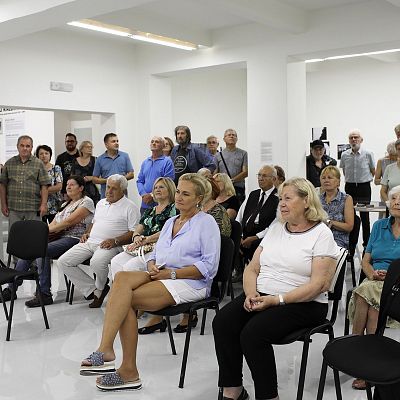APARTMENT EXHIBITIONS Permanent Alternatives. Slovak Unofficial Art 1970–1989
The exhibition offers an insight into the unofficial art scene of the 1970s–80s. Scrutinized is the phenomenon of so-called "apartment exhibitions"—a continuation of the non-public "Confrontations" exhibitions from the beginning of the 1960s—posing as a reaction to the imminent normalization era. Since artists had chosen to elude official exhibition spaces out of ideological reasons, they retreated to privacy. Attended by 19 cross-generational artists, the first studio exhibition, titled "Open Studio," took place on November 19, 1970, in Rudolf Sikora's house on 32 Tehelna Street. The character of the exhibition dictated a search for alternatives to hung pictures and classical sculptures (through site-specific installations, objects and performances). Even the following period did not bring the most fascinating art-scene spectacles to state galleries. Instead, private spaces, such as apartments, houses, studios as well as city streets and natural settings, were chosen. Both mutual communication and friendships between the artists, philosophers, scientists and conservationists—in an era when communist ideologies intruded upon people's lives directly—created these "islands of positive divergence." These were places of unfettered discussions and creations on par with art formed in Western countries—while still preserving their character.
Artists organized the apartment exhibitions in the form of ordinary social calls, generating these “mimicries” to shroud themselves from State Security. The exhibitions were held either occasionally or on a regular basis with custom rules. Here, artists' apartments became art studios and vice versa. The selected exhibition venues were, for instance, Bratislava apartments belonging to Igor Minárik, Ľubo Stacho, Ľubomír Ďurček (“Interspace”), Jana Želibská (“Small Fashion Show”), Ivan Hoffman, Július Koller (the "Ganek Gallery" project), Otis Laubert (“The Guggenheim Museum Branch”) and Katarina Kissoczy's apartment in Prague. Dezider Tóth—as one of the pioneers of apartment exhibitions—had organized artist gatherings, entitled "Deposit," which were later dissolved due to interrogations by State Security. "Deposit" was later followed by "Bratislava Artifact Shifting Championship" (1979–1986)—the longest-running apartment exhibitions project (Jan Kralovič has published a book on the subject). Announced regularly at International Women's Day (March 8) and concluding at Saint Nicholas Day (December 6), the meetings were posed as a challenge around a specific topic, with authors mutually presenting their creations. These would eventually come to life in the symbollical span of nine months in the apartment of one of the participants.
It would be difficult to reconstruct apartment exhibitions in this day and age—to convey the atmosphere and meaning behind them. Many of the creations presented were shaped as performances and installations. Not all of them were photographically captured, however—some only to be kept in memories. The exhibition offers a selection of preserved artifacts and documentations centered around "The First Open Studio", "Deposit" and "Bratislava Artifact Shifting Championship " (a.k.a. "Shifts") as well as select apartment exhibition documentations. Allowed here is a glimpse into recent history, with all its restrictions, as well as into the privacy of those artists who did not abandon the freedom of creation and thought. These are the reasons why both their testimony and works carry a timeless evidential value.
Daniela Čarná
The exhibition is part of the V4 project "A Bridge Over Time. Contemporary Picture of the Past." The project implementation is supported by the International Visegrad Fund.
IMAGE GALLERY
(There are 18 images)
NA STIAHNUTIE





